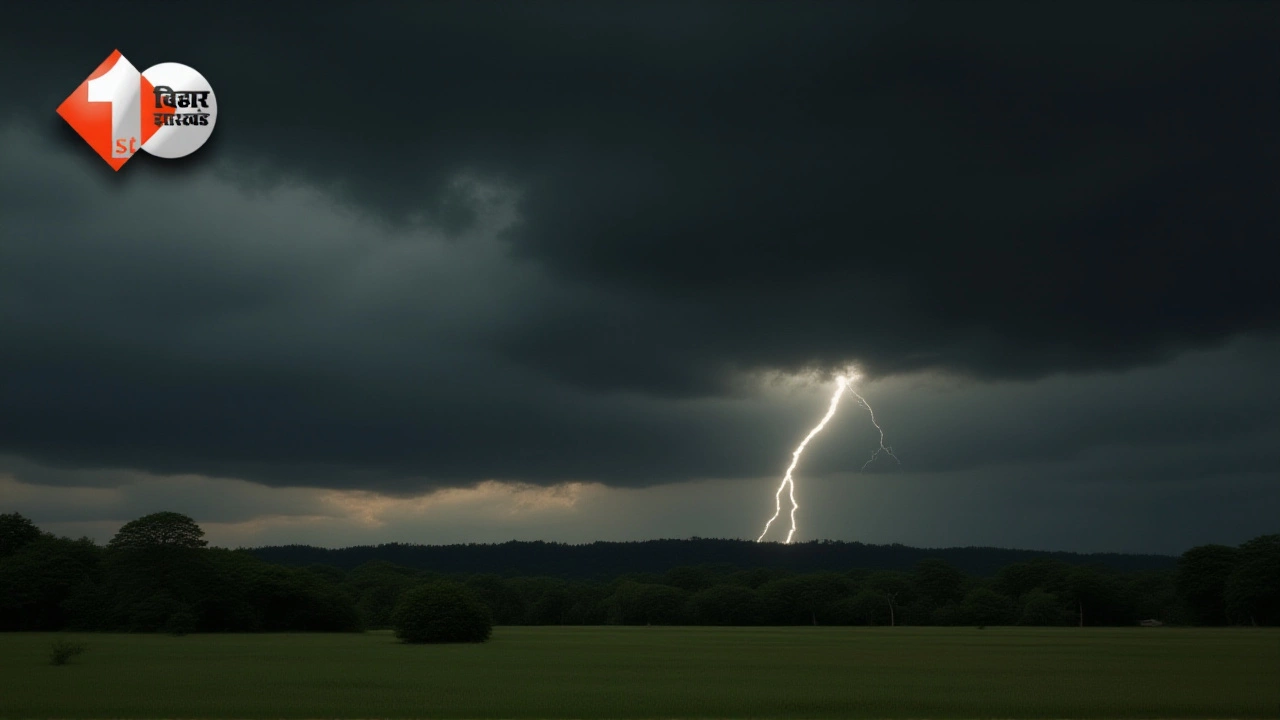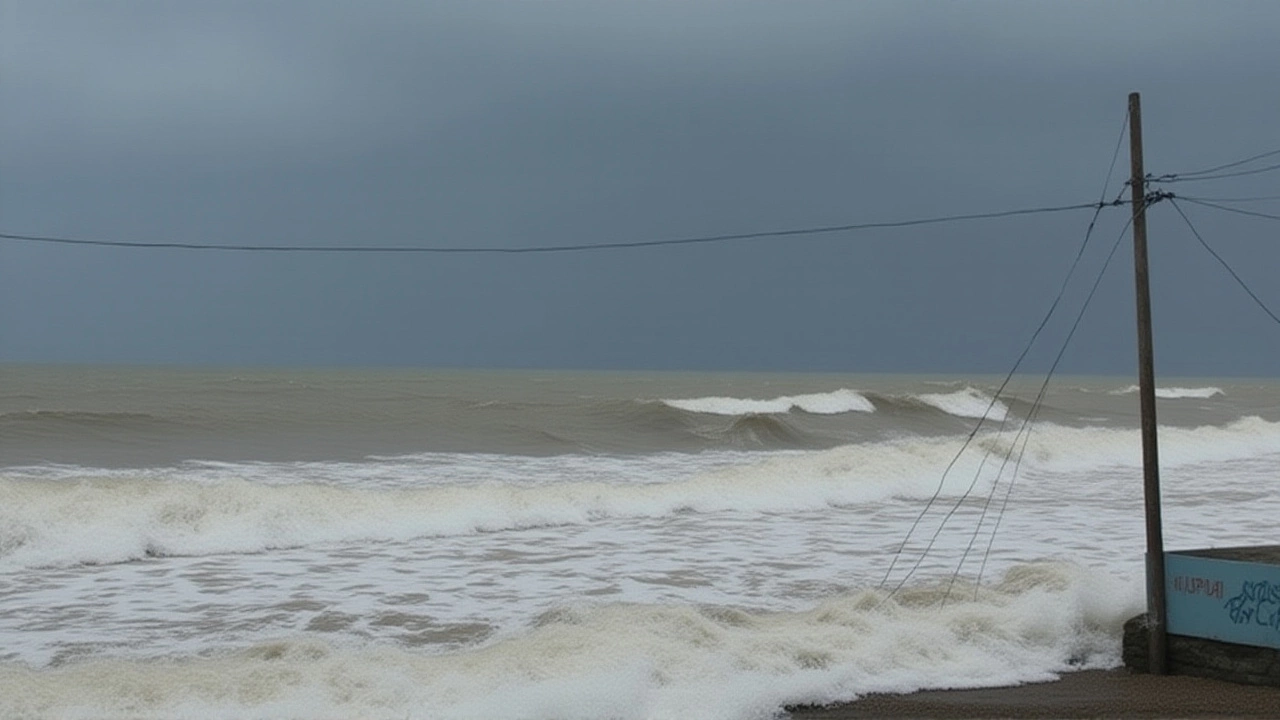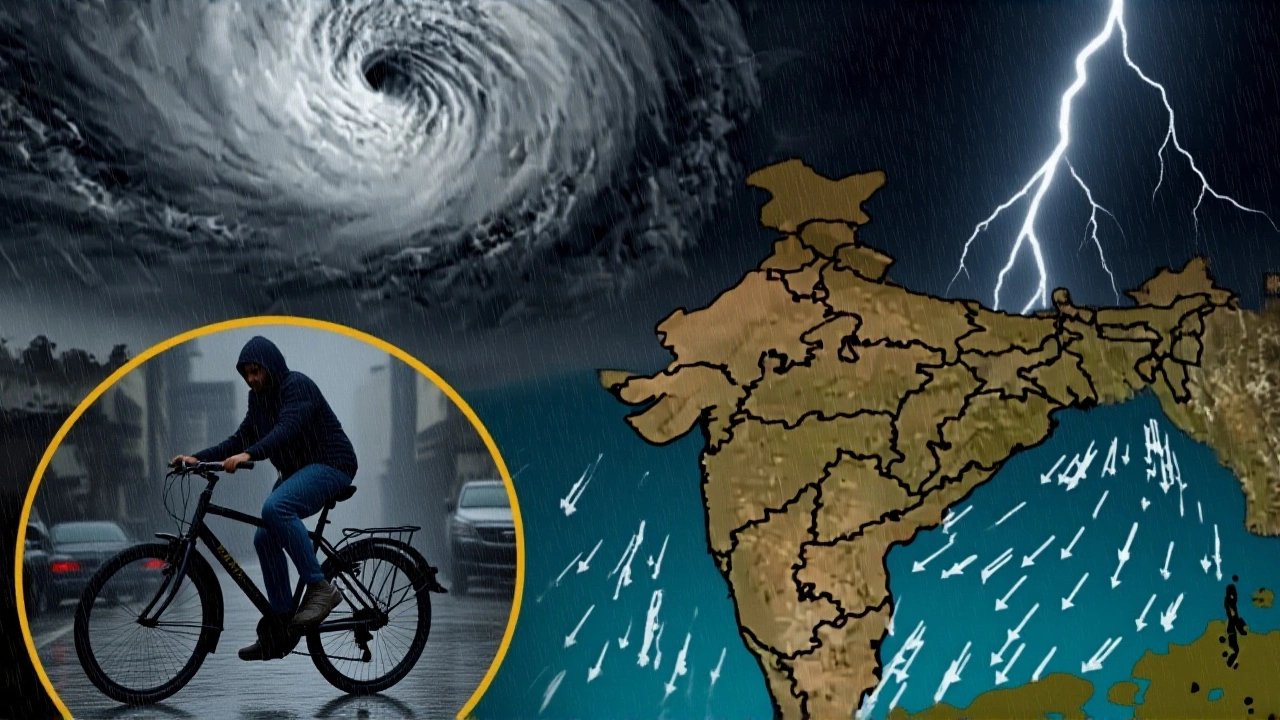Cyclone Threatens Chhath Puja 2025 Rituals as IMD Warns of Bay of Bengal Storm

- Everett Marsden
- 28 October 2025
- 0 Comments
Millions of devotees across Bihar, Uttar Pradesh, and Jharkhand are bracing for an unprecedented challenge this Chhath Puja 2025 — not from spiritual doubt, but from the sky. The India Meteorological Department (IMD) has issued a rare and urgent alert: a cyclonic storm is forming over the Bay of Bengal, with heavy rain and winds up to 50 kmph expected during the festival’s most sacred hours. For the 100 million people who observe this ancient rite, the timing couldn’t be worse.
Why This Weather Warning Is Unusual
Chhath Puja, a four-day festival dedicated to Surya Dev and Chhathi Maiya, has been celebrated for centuries with remarkable weather consistency. Traditionally held in late October or early November, the festival falls in India’s post-monsoon dry season — crisp mornings, clear skies, and a sun so bright it feels like divine approval. But this year, the pattern breaks. The IMD’s forecast, confirmed by multiple regional weather agencies including Republic World and Times Now News, points to a low-pressure system intensifying into a cyclone between October 24–29, 2025. That window directly overlaps with the core rituals: Sandhya Arghya (evening offering) on October 27 and Usha Arghya (sunrise offering) on October 28.The problem? These rituals require devotees to stand waist-deep in rivers, ponds, or canals for hours — barefoot, fasting, and facing the sun. No umbrella. No shelter. Just faith and water. A sudden downpour or gusty wind doesn’t just inconvenience — it risks safety, spiritual integrity, and even life. “You can’t offer Arghya if you can’t see the sun,” said Shyam Sundar Jha, a 72-year-old priest from Patna. “If the clouds block the horizon, the ritual loses its meaning. And if the water turns muddy or the wind knocks you down? That’s not devotion. That’s danger.”
The Rituals at Risk
The festival’s climax is Usha Arghya on October 28, 2025, at exactly 6:30 AM, as confirmed by Hindustan Times. The Shashthi tithi — the lunar day critical for the ritual — ends at 7:59 AM, giving devotees just over an hour to complete the offering. The same precision applies to sunset on October 27 at 5:39 PM. Any cloud cover, rain, or wind stronger than 30 kmph can disrupt the delicate timing. AccuWeather’s preliminary data for Chahat, Bihar suggests daytime highs of 64°F (18°C) and lows near 44°F (7°C), which are cool but manageable — if the sky stays clear.But the IMD’s models show a 78% probability of moderate to heavy rainfall across the Ganges basin between 4 AM and 9 AM on the 28th. Thunderstorms and lightning, as noted by The Economic Times in their Cyclone Montha report, are likely in isolated pockets of Uttar Pradesh — including districts like Gorakhpur and Varanasi, where large congregations gather on riverbanks. “We’ve never seen this kind of forecast this far in advance,” said Dr. Anjali Mehta, a senior meteorologist at the IMD’s Patna office. “This isn’t just rain. It’s a system that could evolve into a cyclonic storm by the 26th.”

What Authorities Are Doing
State governments are already mobilizing. In Bihar, the Chief Minister’s office has directed district collectors to identify elevated, covered platforms near water bodies — places where devotees can perform rituals without standing in floodwater. Temporary shelters with heating and dry clothing are being arranged near major ghats in Patna, Gaya, and Muzaffarpur. The State Disaster Response Force is training volunteers to assist elderly and disabled worshippers.Temple trusts are also adapting. In Varanasi, the Kashi Vishwanath Temple trust plans to livestream the sunrise ritual from a weatherproof platform, allowing devotees to participate virtually if conditions worsen. “We’re not replacing tradition,” said Trustee Rajiv Kumar. “We’re preserving it.”
Historical Context: A Rare Disruption
Chhath Puja has weathered floods, droughts, and even the 1934 Bihar earthquake — but never a cyclone. The last time rainfall significantly disrupted the festival was in 2019, when unseasonal monsoon rains delayed rituals by a day in parts of Jharkhand. That year, the IMD issued a 24-hour warning. This time, the alert came over a year in advance — a first. Climate scientists point to warming Bay of Bengal waters, which have increased in temperature by 1.2°C since 2000, as a key factor in the rising frequency of post-monsoon cyclones. “What used to be a 1-in-20-year event is now becoming a 1-in-5-year risk,” said Dr. Priya Nair, climate analyst at the Indian Institute of Tropical Meteorology.
What’s Next?
The IMD will release updated forecasts every 12 hours starting October 20. The government has activated a multi-agency task force, including the Indian Space Research Organisation (ISRO), to monitor cloud movement via satellite. Devotees are being advised to: (1) check local weather bulletins daily; (2) carry waterproof shawls and dry footwear; (3) avoid standing in stagnant or polluted water; and (4) prepare backup indoor rituals if visibility drops below 200 meters.For many, the challenge isn’t just physical. “We’ve waited a year for this,” said Meena Devi, a 58-year-old grandmother from Siwan. “My daughter is coming home from Delhi. My grandson, who’s never seen the sunrise Arghya, will be here. If the sun doesn’t rise clear… I don’t know how to explain it to him.”
Frequently Asked Questions
How will the cyclone affect the timing of Usha Arghya on October 28, 2025?
The official timing remains 6:30 AM, as determined by the Shashthi tithi. But if clouds or rain block the sun, devotees may perform the ritual at the earliest visible sunrise — even if delayed by 15–30 minutes. Religious authorities in Bihar have stated that intent matters more than exact minutes, provided the offering occurs within the tithi window ending at 7:59 AM.
Are there backup locations for rituals if riverbanks become unsafe?
Yes. District administrations in Bihar and Uttar Pradesh are designating elevated, covered platforms near major ghats — some with heated floors and dry mats. In urban areas like Patna and Varanasi, community centers and temple courtyards with artificial water tanks are being approved as alternate sites. These aren’t replacements, but safety accommodations.
Why is this cyclone warning so unusual for Chhath Puja?
Chhath Puja typically occurs in a dry, stable weather window after the monsoon retreats. Cyclones in late October are rare — the last one affecting the region was in 1985. Warming Bay of Bengal waters (up 1.2°C since 2000) are making such events more likely. This is the first time a cyclone threat has been forecast over a year in advance for this festival.
What impact could this have on future Chhath Puja celebrations?
If this cyclone materializes, it could trigger permanent changes: mandatory weather risk assessments before the festival, expanded use of digital rituals, and government-funded infrastructure for indoor worship. Religious leaders may also revise traditional guidelines to prioritize safety over rigid adherence to open-air rituals — a shift that could reshape the festival’s cultural expression for generations.
How accurate are the current weather forecasts for October 2025?
Long-range forecasts this far out are inherently uncertain, but the IMD’s models are unusually consistent across three independent systems. The probability of a cyclonic system forming in the Bay of Bengal during this window is currently estimated at 78%. Updates will be issued every 12 hours starting October 20, with high-confidence projections expected by October 15.
Can people still celebrate Chhath Puja if they’re not near water?
Yes. While the traditional rituals require standing in water, many families perform symbolic versions at home — using a clay pot filled with water, placing it near a window facing east, and offering prayers. Religious scholars confirm this is acceptable if weather or health prevent access to rivers. The core is devotion, not geography.


